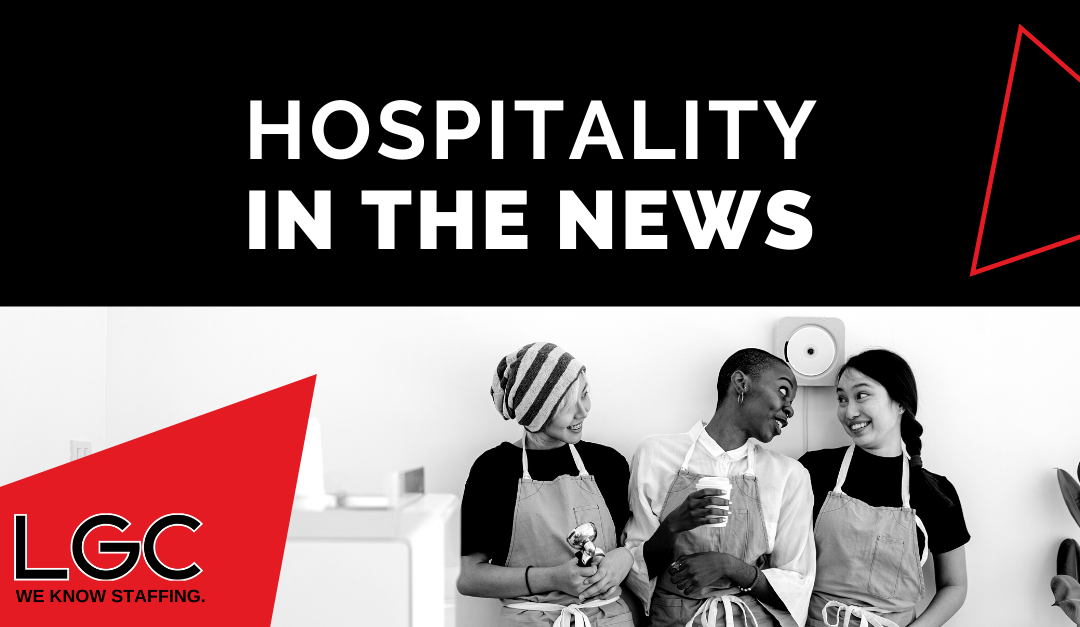Every week we comb through the news to find employment trends affecting the hospitality industry so you don’t have to. This week’s topic: providing an update on COVID-related consumer sentiment.
Back in November 2020, we discussed the differences between consumer sentiment and consumer confidence and how that impacts restaurant recovery. In this article, we’ll be providing an update on COVID-related consumer sentiment one year later as we finish out 2021. As a reminder, we’ll share some of the key takeaways of that article. But first it’s important to understand what consumer sentiment is and how it differs from consumer confidence.
What’s the difference between consumer sentiment and consumer confidence?
Consumer sentiment measures how someone feels about doing something, whereas consumer confidence measures whether they’ll do something. For example, a consumer sentiment report may ask “How do you feel about going out to eat at a restaurant in the next month?” While a consumer confidence report would ask “How likely are you to go out to eat at a restaurant in the next month?” Although the differences are minor, the intentions of these metrics are to compare willingness and ability (respectively).
Key takeaways from November 2020 Consumer Sentiment (vs. Consumer Confidence) article:
- While guests may want to go out to eat, they aren’t fully comfortable doing so yet which will prevent them from taking action.
- Despite the growing coronavirus cases, sentiment is increasing as of the last three months.
- When the curve begins to flatten, guests will quickly return to dine-in service because their comfort levels will increase.
Despite the continued presence of the pandemic, the past 12 months have shown a shift in COVID-related consumer sentiment. In order to have a good understanding of your customers, staying up to date on how consumers are feeling is crucial. A recent report by Intouch Insight found the following about how consumers are adjusting to “the new normal.”
Update on COVID-related consumer sentiment
Pandemic-related drivers have dropped in importance when consumers are tasked with deciding where to dine. In our initial report, consumers were choosing dining establishments based on factors like contactless service or outdoor seating – I.e., health and safety protocols. But now, we’ve been living with the pandemic for just a few months shy of two years. As consumers became more comfortable, their drivers for choosing a restaurant started shifting back to factors like food quality, price, and cleanliness (which were common factors pre-pandemic).
What does this mean for your business?
- Available funds should be allocated towards focusing on food quality and lowering prices amidst the rising food costs.
Easy to use hospitality technology is a must for customers. Regardless of an overall increase in dine-in customers, pickup and delivery options are still popular. (And we don’t expect this to change any time soon.) According to the report, about half of respondents continue to show increased online spending, with 60% using alternative methods to receive their order, like pickup or delivery. Not only that, but consumers prefer to place orders directly through the restaurant as opposed to a third-party service like Grubhub. Ease and efficiency isn’t just a COVID-related consumer sentiment – we expect to see that in demand long after it’s quieted.
What does this mean for your business?
- Implementing relevant technology into your operations is an effective way to draw customers in and keep them engaged especially regarding pickup and delivery.
Word-of-mouth plays a huge part in consumers decisions. More than half (51%) of respondents rely on reviews when deciding where to dine. Positive reviews can make or break a customers’ decision on what brand they choose. Interestingly, while most respondents said they were willing to leave feedback, only half of businesses are actually asking for it.
What does this mean for your business?
- Restaurant operators should be taking advantage of guests’ willingness to share feedback.
Understanding consumer sentiment is crucial when running a restaurant. It impacts just about every facet of the business including marketing, technology implementation, and operations – just to name a few. It’s important to stay up to date on COVID-related consumer sentiment especially as we enter the new year. Be sure to subscribe to the LGC blog to receive updates on our newest articles.

